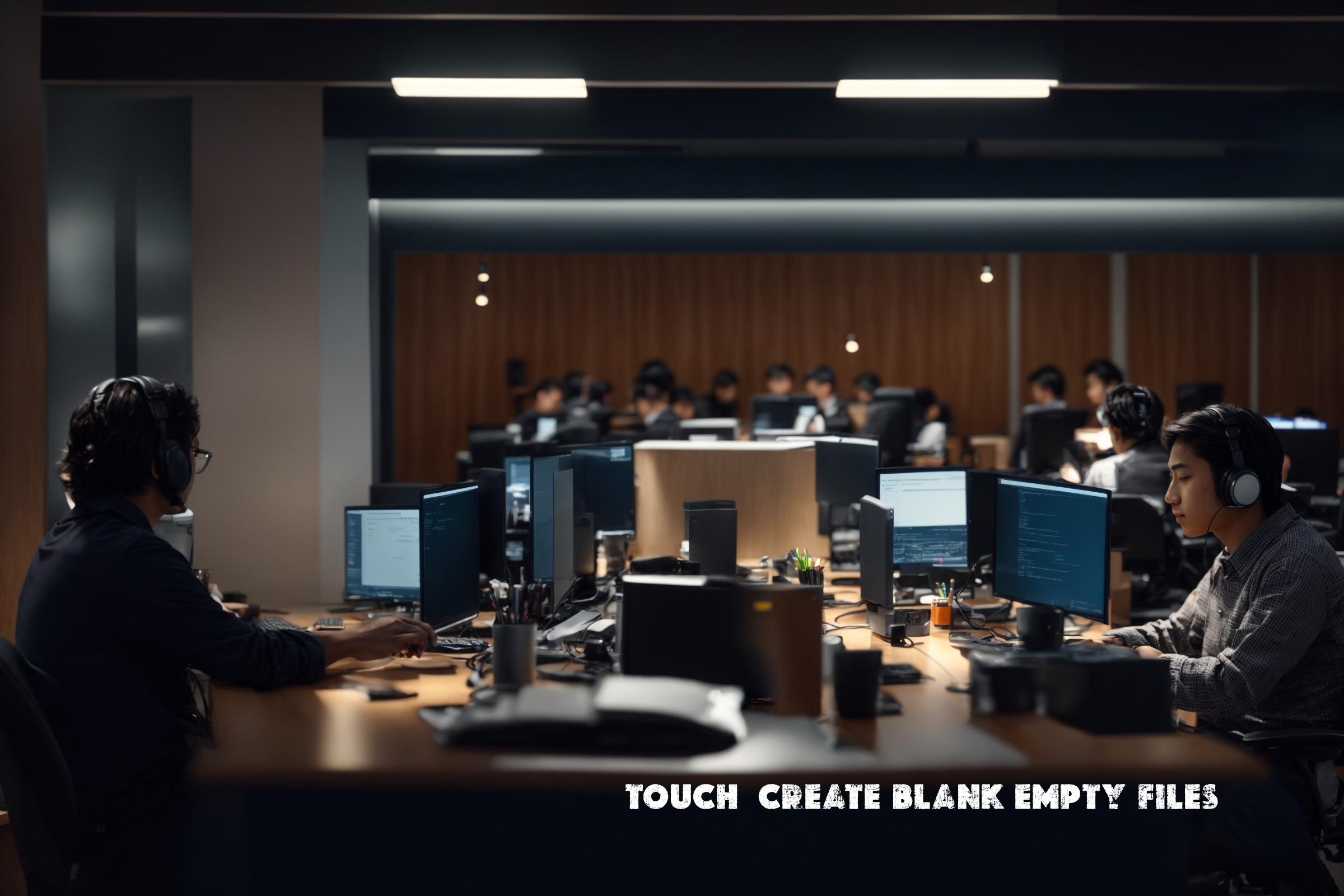
Using touch command – Create blank/empty files linux package
The touch command is a commonly used command in Linux that is used to create blank or empty files. It is a simple and efficient way to create files without any content. The touch command is available in most Linux distributions and is a part of the GNU core utilities package.
The touch command is used to update the access and modification timestamps of a file. If the file does not exist, the touch command creates an empty file with the specified name. If the file already exists, the touch command updates the timestamps of the file to the current time.
The touch command is often used in scripting and automation tasks to create placeholder files, update timestamps, or check the existence of a file. It is a versatile command that can be used in various scenarios.
Official page of touch (Create blank/empty files): https://www.gnu.org/software/coreutils/manual/html_node/touch-invocation.html
Languages used to build touch (Create blank/empty files)
The touch command is a part of the GNU core utilities package, which is written in C programming language. Therefore, the touch command itself is written in C. However, the touch command can be used in shell scripts, which can be written in various scripting languages such as Bash, Python, Perl, etc.
How to install touch (Create blank/empty files) on supported operating systems
The touch command is a part of the GNU core utilities package, which is pre-installed on most Linux distributions. However, if the touch command is not available or you want to install the latest version, you can follow the instructions below to install it on supported operating systems:
Ubuntu/Debian
sudo apt-get install coreutils
CentOS/RHEL
sudo yum install coreutils
Arch Linux
sudo pacman -S coreutils
Examples of touch (Create blank/empty files) commands
Here are some examples of touch commands with descriptions of what they do:
Create a new empty file
touch file.txt
This command creates a new empty file named file.txt in the current directory.
Update the timestamps of a file
touch -c file.txt
This command updates the access and modification timestamps of the file.txt file to the current time. If the file does not exist, it does not create a new file.
Create multiple files at once
touch file1.txt file2.txt file3.txt
This command creates three new empty files named file1.txt, file2.txt, and file3.txt in the current directory.
Similar commands and benefits of touch (Create blank/empty files)
There are several other commands and utilities in Linux that can be used to create blank or empty files. Some of the similar commands and their benefits compared to the touch command are:
echo command
The echo command can be used to create a new file with content. However, the touch command is more efficient for creating empty files as it does not require any content to be specified.
cp command
The cp command can be used to create a new file by copying an existing file. However, the touch command is simpler and faster for creating empty files.
dd command
The dd command can be used to create a new file with a specific size. However, the touch command is more suitable for creating empty files without any content.
Examples of touch (Create blank/empty files) in automation
Here are three examples of scripts that use the touch command for automation:
Example 1: Create a placeholder file for a log
#!/bin/bash
LOG_FILE="/var/log/myapp.log"
touch "$LOG_FILE"
This script creates a placeholder file for a log file named myapp.log in the /var/log directory. The touch command is used to create the file if it does not exist.
Example 2: Update the timestamp of a file
#!/bin/bash
FILE="/path/to/file.txt"
touch -c "$FILE"
This script updates the access and modification timestamps of the file.txt file to the current time. If the file does not exist, it does not create a new file.
Example 3: Check the existence of a file
#!/bin/bash
FILE="/path/to/file.txt"
if [ ! -e "$FILE" ]; then
touch "$FILE"
fi
This script checks if the file.txt file exists. If it does not exist, it creates a new empty file using the touch command.
List of touch (Create blank/empty files) functions and constants
| Function/Constant | Description |
|---|---|
| touch | Create a new empty file or update the timestamps of an existing file |
| -a, –time=atime | Change only the access time of the file |
| -c, –no-create | Do not create a new file if it does not exist |
| -d, –date=STRING | Use the specified date and time instead of the current time |
| -m, –time=mtime | Change only the modification time of the file |
| -r, –reference=FILE | Use the timestamps of the reference file instead of the current time |
| -t, –time=WORD | Change both the access and modification times of the file |
Conclusion
The touch command is a versatile and commonly used command in Linux for creating blank or empty files. It is a part of the GNU core utilities package and is available on most Linux distributions. The touch command can be used in various scenarios such as creating placeholder files, updating timestamps, or checking the existence of a file. It is often used in scripting and automation tasks. The touch command is written in C programming language and can be used in shell scripts written in various scripting languages. It is a simple and efficient command that is widely used by system administrators, developers, and automation engineers in their daily work.

This article incorporates information and material from various online sources. We acknowledge and appreciate the work of all original authors, publishers, and websites. While every effort has been made to appropriately credit the source material, any unintentional oversight or omission does not constitute a copyright infringement. All trademarks, logos, and images mentioned are the property of their respective owners. If you believe that any content used in this article infringes upon your copyright, please contact us immediately for review and prompt action.
This article is intended for informational and educational purposes only and does not infringe on the rights of the copyright owners. If any copyrighted material has been used without proper credit or in violation of copyright laws, it is unintentional and we will rectify it promptly upon notification. Please note that the republishing, redistribution, or reproduction of part or all of the contents in any form is prohibited without express written permission from the author and website owner. For permissions or further inquiries, please contact us.


